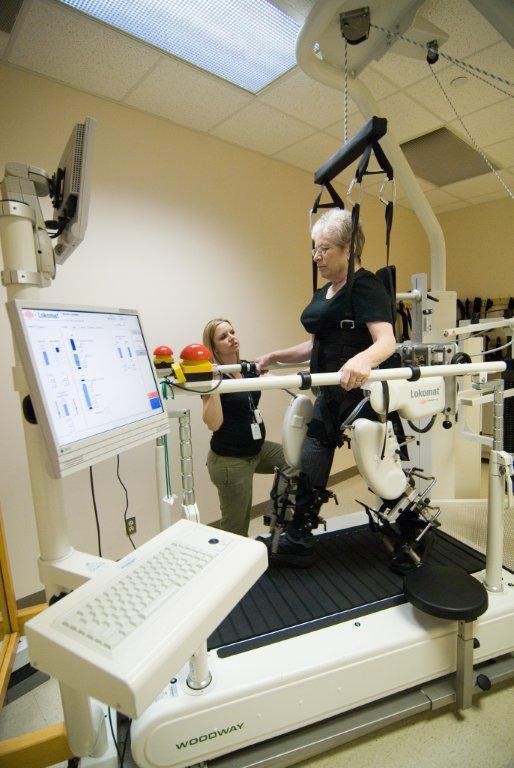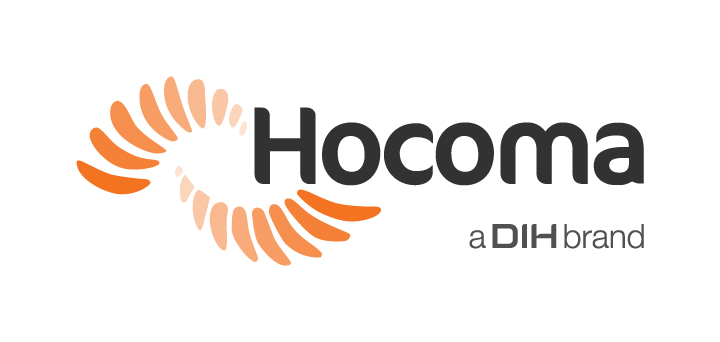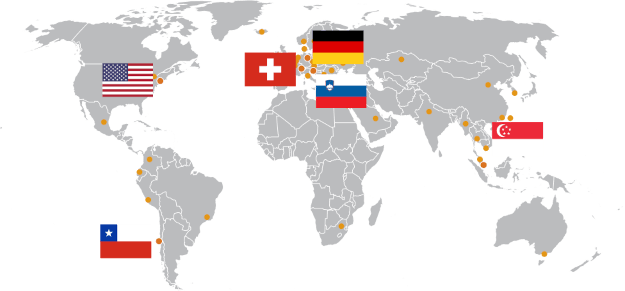June 5, 2015
Clinical Integration of the Lokomat®: Courage Kenny Rehabilitation Institute, Allina Health, USA
Brian LeLoup
Courage Kenny Rehabilitation Institute, Allina Health, Minnesotta, USA
We work with the Lokomat with adult patients with neurological diseases, such as acquired brain injury (through stroke or trauma) and spinal cord injury . The Lokomat is integrated as part of our therapy in our inpatient rehabilitation unit as well as in the comprehensive outpatient department since 2007.
Here we describe our clinical setting and hope that it serves as an example to support other clinics that also work with the Lokomat.
Patient Group
We use Lokomat for three main groups of patients: stroke, traumatic brain injury (TBI) and spinal cord injury (SCI).
We treat patients in an acute (first weeks/ months after the event) or chronic state (over years) in inpatient or outpatient services.
Prescription: Inclusion Criteria
Whether a patient receives gait training in the Lokomat as part of their treatment depends mainly on the severity of the patient’s condition. Since we work on a one-to-one basis with the patient, we need the clinician to be able to handle the patient by himself.
We believe that in order to rehabilitate the walking function, we need to walk a lot early in the rehabilitation process. Therefore, we select the option that allows us to do intensive walking while only one clinician is required. If more than one clinician would be required to perform intensive gait training, then we use the Lokomat as a training tool.
Duration and Frequency of Lokomat® Sessions
The patients are scheduled in one hour time blocks. The target is 40 minutes of walking.
Training frequency is normally determined by our health reimbursement system and the patient’s therapy goals.
- Inpatients in the hospital train 3-4 times per week because they automatically receive 90 minutes of physical therapy 6 days per week. So our criteria call for combining it with 2-3 times per week with overground-based therapy.
- Outpatients: 2-3 times per week depending on the clinical goals. While some patients come just for gait training (Lokomat or over-ground), most patients receive gait training as part of their general training schedule (1-2 times per week with the Lokomat).
All in all patients receive treatment from one to three months. This is based on patient progress and the extent to which insurance providers will cover. After the first month, we need to prove clinical progress in order to continue therapy for the remaining two months.
The main drivers for receiving an additional 1-3 month rehab period are clinical improvements. The doctor decides if the treatment resulted in progress. Conversely, setbacks in the rehabilitation process, such as rehospitalization, could mean the patient needs another period of rehabilitation.
Patient Evaluation
We assess our patients based on clinical judgment. We look at our criteria to see if intensive gait training is appropriate and then we make sure that the patient has no contraindications for the Lokomat System.
Progress is defined as improvements in walking both over ground and in the Lokomat system. More specifically:
- Progress in the Lokomat parameters: Reduction of BWS, for example, would be considered progress. This can be enough the first month, but later we need clearer improvements.
- Gait components: Balance is one example where improvements can be shown.
- Assistance level in over-ground walking: The level of assistance is a percentage which refers to how much the patient contributed and how much the therapist helped. It is calculated based on the patient’s ability to maintain stance phase, trigger swing phase, his trunk control, among other factors.
Reasons to Include the Lokomat® as Part of the Therapy Program
We use the Lokomat for the following reasons:
- Efficiency: With the Lokomat we can provide intensive training sessions with just one clinician in many cases. In the past we needed to support our clinicians as some patients required more than one therapist.
- Clinical outcomes: With the Lokomat, patients show improvement in certain clinical outcomes.
Other Therapies Provided in Addition to Lokomat®
The main therapies that we provide in addition to the Lokomat are:
- Manual treadmill training;
- Over-ground walking;
- Electrical stimulation (cycling, and FES);
- Aquatic (pool) training, balance exercises and manual therapy;
- Traditional strength, balance, and functional mobility training.

Patient receiving Lokomat therapy.
Lokomat® Therapy Team
The same clinician does conventional and Lokomat therapy for the individual patient. We believe this enables the clinician to have a clear picture of the patient’s needs both on and off the Lokomat.
The clinician needs to carry over what he sees during over-ground therapy into the Lokomat session while focusing on the therapy goals.
All in all we are a team of about 12 therapists. Being a small group affords individual therapists the ability to adjust the treatment to best fit the needs of the patient.
In my opinion, it’s problematic for clinics to have one Lokomat specialist who does not work with the patient in other facets of the rehabilitation.
Pricing of Lokomat® Therapy
Ninety-five percent of the patients are covered by insurance, and the remaining five percent pay privately.
We are reimbursed by the patients’ insurance a fixed amount per therapy session, independent of what the session entails. Using the Lokomat benefit us by reducing the number of clinicians required.
About us
Courage Kenny Rehabilitation Institute was created in 2013. It provides a continuum of rehabilitation services for people with short and long term conditions, injuries and disabilities. Institute’s goal is to improve health, make it easier for families to get the right services and reduce costs by preventing complications. Our services include inpatient care, outpatient care and community services.
This clinical experience report is meant to serve as an example of how the Lokomat is integrated into an ambulatory rehabilitation setting in an outpatient clinic. It is not necessarily a standard recommendation from Hocoma.


